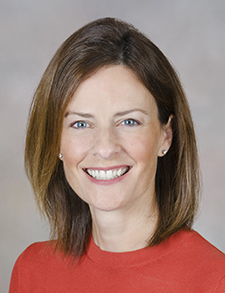The 2023 SHM Converge Conference in Austin, Texas was the backdrop for a chance encounter between two old friends. We and our spouses met during residency 20 years ago, became fast friends, and then parted ways as one went off to begin an academic hospitalist practice in the Gold Coast of Australia, and the other remained in an academic hospitalist career in the Pacific Northwest. We had kids, built homes, and gathered a few times over the years for multi-family vacations, but had not seen one another since 2018 before the global pandemic and its era of isolation.
We found ourselves bonding over updates on our families, middle age, and life as mid-career hospitalists. Having just attended the wonderful “Updates” talk in which we learned the latest updates for treating heart failure (GDMT! Titrate those doses! Add the SGLT-2 inhibitor!), we found ourselves reminiscing about the evolution of the treatment of this condition over our careers. Start the beta blocker, no don’t, not during an exacerbation. Add spironolactone! No wait, eplerenone! Titrate the ACE. No, the ARB!
What struck both of us was that some of our passion for consuming the latest in evidence-based medicine treatments had waned. In its place was something mellower, more seasoned. What we found ourselves discussing was an understanding that these treatments would soon be replaced or augmented by another NKOTB (that is “New Kids On The Block” for those who aren’t middle-aged) and that rather than focusing on that, our approach to heart failure and other illnesses had shifted to something more practical, more synthetic.
Phronesis is defined as “wisdom in determining ends and the means of attaining them, practical understanding, sound judgment.” According to Aristotle, phronesis goes beyond analytical, scientific knowledge (episteme), and technical knowledge (techne) and instead invokes practical wisdom based on judgment which is honed over time.
As we caught up about our kids, college decisions, and mutual friends, we found ourselves bonding over some of the realities of middle age—eye crinkles, receding hairlines, softening of formerly sharp angles. We laughed and recognized that despite these downsides, there are many upsides—not the least of which is an amassing of phronesis. Gone are the “whipper snapper” young attending physicians who gave chalk talks on the latest in evidence-based medicine. Replacing these are conversations with our learners about practical realities: Are five new medications really feasible for this patient? Have we talked about the goals of care? While we pore over consultant recs over this treatment or that, have we taken the time to convey our knowledge to the patient about the ultimate outcome?
After all, by now we have seen the arc of illness and know how the story will end.
As hospital medicine moves into middle age, we cannot help but wonder if it too will begin to mellow. Instead of jumping at the latest treatment or doing the newest scan just because we can, perhaps we should be advocating for a “tincture of time” and close observation. We should be thinking about the practical realities of cost and access to care, and patient goals and values, and—using our collective voices and amassed wisdom—use this to influence the practice of hospital medicine into the future.

Dr. Halvorson

Dr. Fink
Dr. Halvorson is an associate professor of medicine and division chief of hospital medicine at Oregon Health & Science University in Portland, Ore. Dr. Fink is a hospitalist at Gold Coast Hospitals, Queensland, Australia.
Great article.
Very humbling and appreciated.